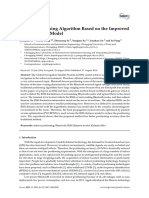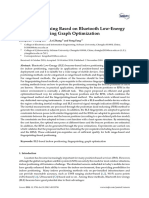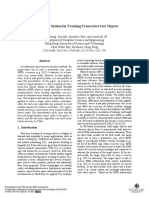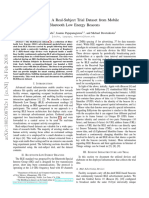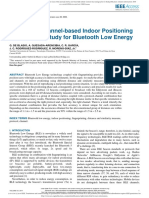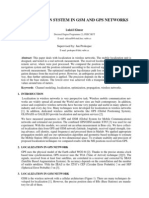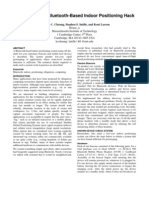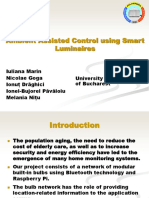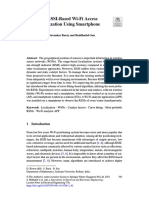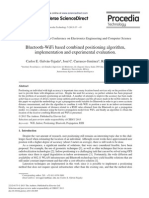0% found this document useful (0 votes)
57 views4 pagesBluetooth-Beacon Indoor Positioning
The document describes the design and implementation of an indoor positioning system using Bluetooth beacons. Bluetooth modules are configured as beacons and placed in an indoor corridor. The user's position is determined using the received signal strength indication values from the three closest beacons and trilateration technique.
Uploaded by
Fawwaz TasneemCopyright
© © All Rights Reserved
We take content rights seriously. If you suspect this is your content, claim it here.
Available Formats
Download as PDF, TXT or read online on Scribd
0% found this document useful (0 votes)
57 views4 pagesBluetooth-Beacon Indoor Positioning
The document describes the design and implementation of an indoor positioning system using Bluetooth beacons. Bluetooth modules are configured as beacons and placed in an indoor corridor. The user's position is determined using the received signal strength indication values from the three closest beacons and trilateration technique.
Uploaded by
Fawwaz TasneemCopyright
© © All Rights Reserved
We take content rights seriously. If you suspect this is your content, claim it here.
Available Formats
Download as PDF, TXT or read online on Scribd
/ 4








